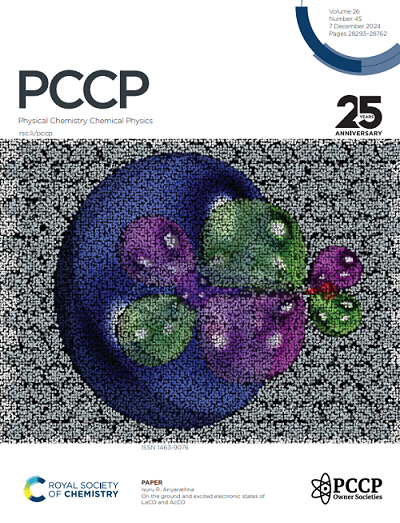Oxygen exchange kinetics of BaGd0.3La0.7Co2O6−δ with exsolved Co3O4 nanoparticles in dry and humid atmospheres
IF 2.9
3区 化学
Q3 CHEMISTRY, PHYSICAL
引用次数: 0
Abstract
The oxygen exchange kinetics of BaGd0.3La0.7Co2O6−δ (BGLC37) were investigated with pulsed isotope exchange (PIE) measurements in dry and humid atmospheres in the temperature range 400–600°C in 0.005-0.21 bar O2. Synchrotron X-ray diffraction and scanning transmission electron microscopy (STEM) revealed exsolved Co3O4 nanoparticles dispersed on the surfaces that may contribute to the catalytic activity of the material towards the oxygen exchange reactions. The obtained oxygen exchange rate was 4.45×10−3 mol m−2 s−1 at 600°C in 0.21 bar O2 with an activation energy of 0.84 eV. The rate determining step of the exchange reaction was determined to be dissociative adsorption of oxygen in both dry and humid atmospheres based on the individual rates of dissociative adsorption and incorporation, as well as a pO2 dependencies of the overall exchange rate of around 1. The effect of water on the overall exchange rate was found to be dependent on the oxygen partial pressure, decreasing the rate at 0.21 bar O2 and 600°C by a factor of approx. 2, while increasing the rate at 0.02 bar and 0.005 bar O2 by a similar amount. In situ thermogravimetric analysis was used to characterise the oxygen non-stoichiometry of the material throughout the oxygen exchange measurements.求助全文
约1分钟内获得全文
求助全文
来源期刊

Physical Chemistry Chemical Physics
化学-物理:原子、分子和化学物理
CiteScore
5.50
自引率
9.10%
发文量
2675
审稿时长
2.0 months
期刊介绍:
Physical Chemistry Chemical Physics (PCCP) is an international journal co-owned by 19 physical chemistry and physics societies from around the world. This journal publishes original, cutting-edge research in physical chemistry, chemical physics and biophysical chemistry. To be suitable for publication in PCCP, articles must include significant innovation and/or insight into physical chemistry; this is the most important criterion that reviewers and Editors will judge against when evaluating submissions.
The journal has a broad scope and welcomes contributions spanning experiment, theory, computation and data science. Topical coverage includes spectroscopy, dynamics, kinetics, statistical mechanics, thermodynamics, electrochemistry, catalysis, surface science, quantum mechanics, quantum computing and machine learning. Interdisciplinary research areas such as polymers and soft matter, materials, nanoscience, energy, surfaces/interfaces, and biophysical chemistry are welcomed if they demonstrate significant innovation and/or insight into physical chemistry. Joined experimental/theoretical studies are particularly appreciated when complementary and based on up-to-date approaches.
 求助内容:
求助内容: 应助结果提醒方式:
应助结果提醒方式:


